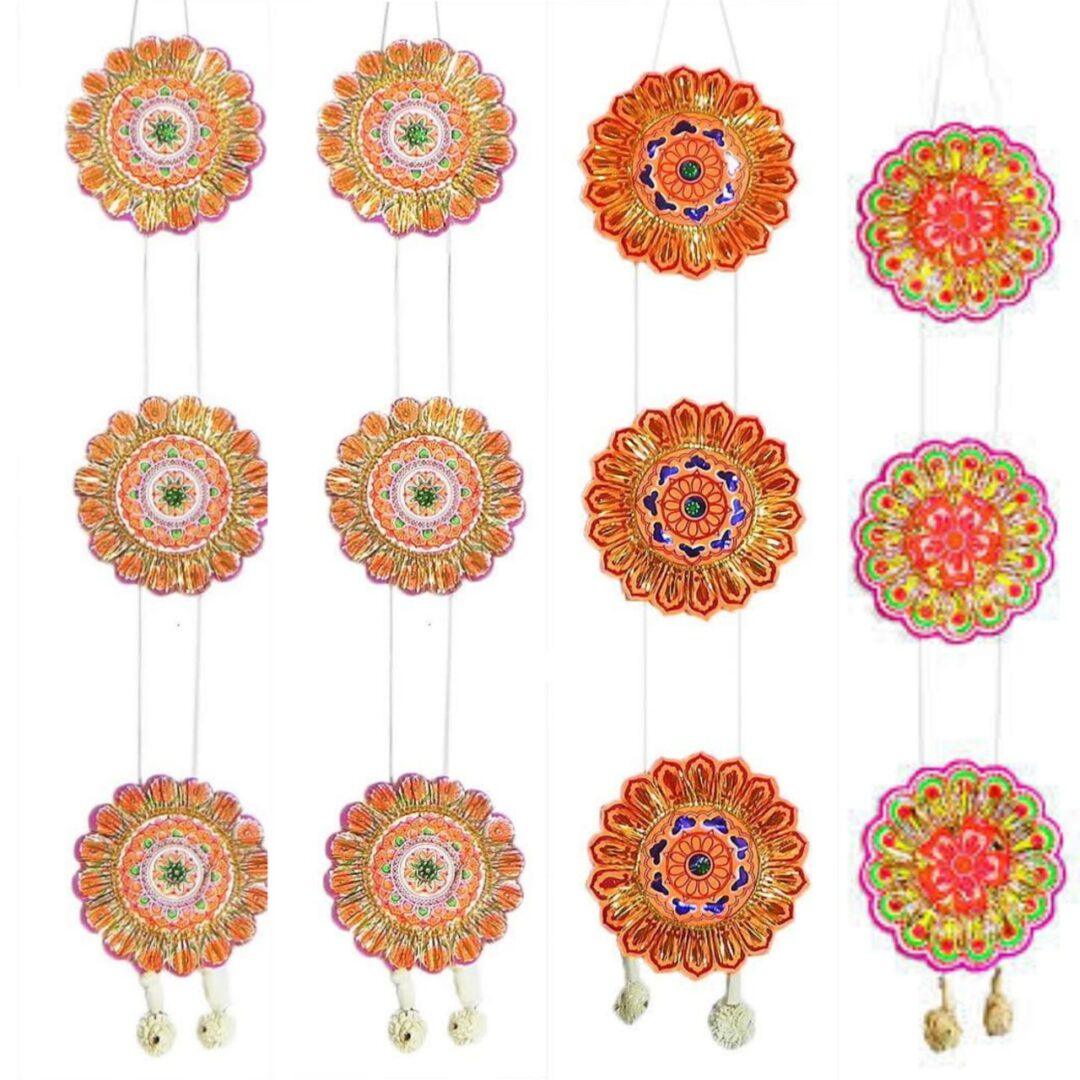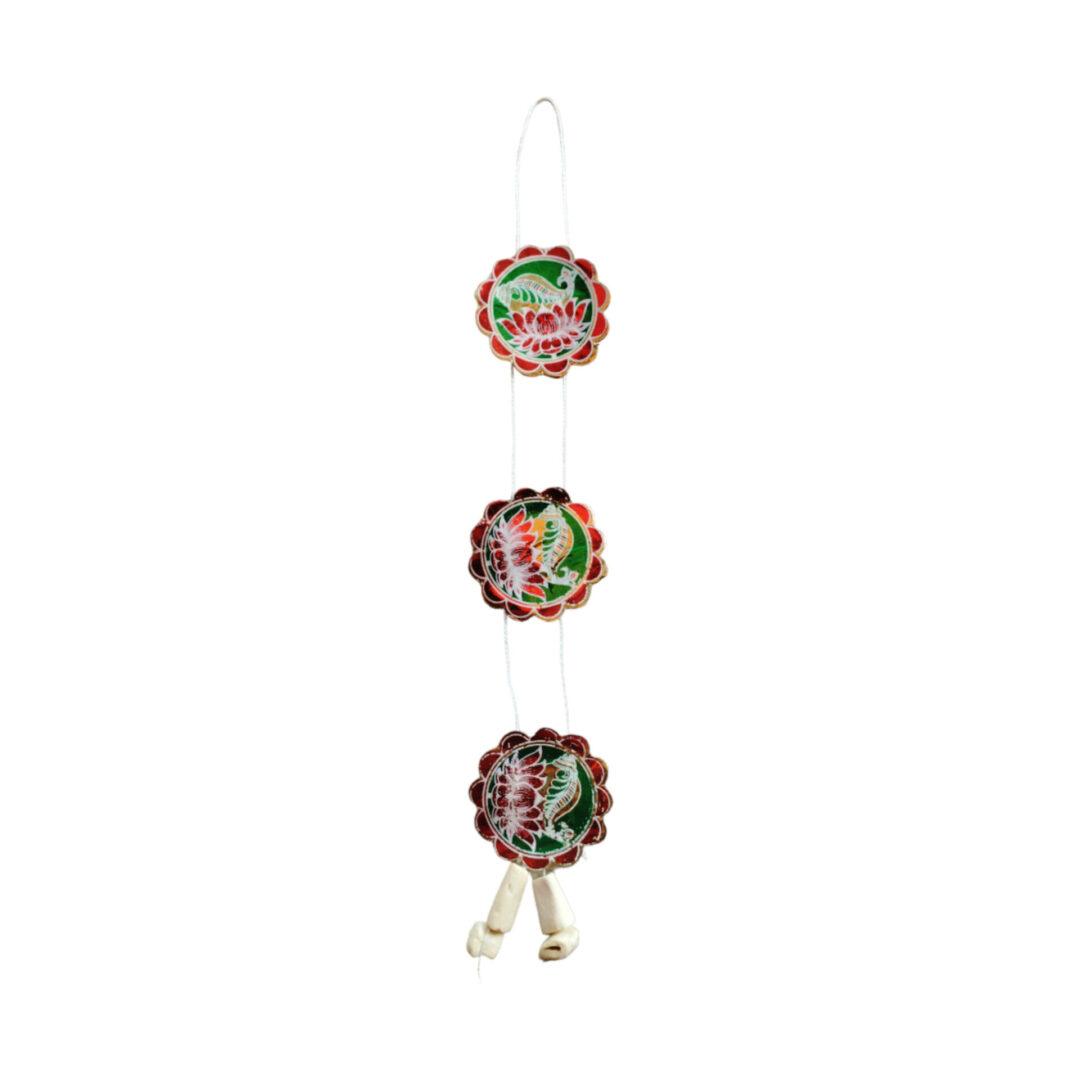. “Chand Mala” refers to a specific type of accessory used in Hindu religious practices. It is essentially a crescent-shaped garland or ornament designed to be hung from the hands of a deity or idol during religious ceremonies. This accessory is often made from materials like gold, silver, or other metals and is used to adorn the hands of the deity to enhance its aesthetic appeal during worship or rituals.
The term “Chand Mala” is derived from the word “chand,” which means “moon” in several Indian languages, and “mala,” which means “garland.” The crescent shape of the accessory is reminiscent of the moon, which is considered a symbol of beauty and divinity in Hinduism.
Chand Mala is typically used in temples and during special religious events where idols of deities are adorned with various ornaments and garments to create a visually pleasing and spiritually significant atmosphere. It is one of the many items used in the elaborate rituals and worship practices of Hinduism.
The use of Chand Mala in various Hindu cultures can vary, but it generally serves a common purpose of adorning deities during religious ceremonies and rituals. Here are some of its common uses in different Hindu cultural contexts:
- Temple Worship: In temples across India, Chand Mala is used to decorate the idols of deities, especially during festivals and special ceremonies. It is draped around the hands of the deity to enhance their visual appeal and symbolize their divine beauty.
- Festivals: During major Hindu festivals such as Diwali, Navaratri, and Durga Puja, Chand Mala may be prominently featured in the decorations of idols. It adds a touch of elegance and grandeur to the festivities.
- Marriage Ceremonies: In some Hindu communities, Chand Mala is used in wedding rituals. It can be presented to the bride as part of her wedding jewelry, symbolizing the blessings of the deity for a prosperous and harmonious married life.
- Puja and Meditation: Chand Mala can also be used by individuals during personal meditation and prayer. It is believed to have spiritual significance and can be worn as a symbol of devotion to a particular deity.
- Religious Processions: In processions or religious parades, Chand Mala may be worn by participants or used to decorate the portable deities being carried through the streets.
- Offerings and Worship: Devotees often offer Chand Mala to deities as a form of devotion and to seek the deity’s blessings. It is considered a way to honor and show reverence to the divine.
- Cultural Significance: Chand Mala, with its crescent shape resembling the moon, also carries cultural symbolism. The moon is often associated with beauty and grace in Hindu culture, making Chand Mala a significant accessory for adorning deities.
It’s important to note that the specific uses and customs related to Chand Mala may vary from one region or community to another within the diverse tapestry of Hindu culture.
The name and regional variations of Chand Mala may differ across various Indian regions and languages. Here are some common regional names and variations for this accessory:
- Chand Mala (चांद माला): This is the standard Hindi term for the crescent-shaped garland.
- Chandhan Mala (ಚಂದನ್ ಮಾಲ): In Kannada, it is often referred to as “Chandhan Mala,” where “chandhan” means sandalwood.
- Chandhaar (চাঁদার) Mala: In Bengali, it may be called “Chandhaar Mala.”
- Chandika Haar (ચંદીકા હાર): In Gujarati, it can be referred to as “Chandika Haar.”
- Chandramaala (చంద్రమాల): In Telugu, it may be called “Chandramaala.”
- Chandira Haar (ചന്ദിര ഹാര്): In Malayalam, it might be referred to as “Chandira Haar.”
- Chandni Haar (चांदनी हार): In some regions, especially in North India, it may be called “Chandni Haar,” where “chandni” means moonlight or radiance.
- Chandrahar (चंद्रहार): In Marathi, it can be referred to as “Chandrahar.”
- Chandra Haar (ਚੰਦ੍ਰ ਹਾਰ): In Punjabi, it may be called “Chandra Haar.”
- Chandra Malai (சந்திர மாலை): In Tamil, it might be referred to as “Chandra Malai.”
These are just a few examples, and the names may vary further depending on local dialects and customs. The central idea behind the accessory, regardless of its regional name, remains the same – to adorn deities or individuals in a crescent-shaped garland.





Reviews
There are no reviews yet.